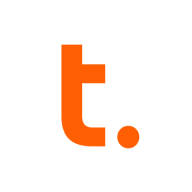

Teradata and IBM Db2 Warehouse compete in the data warehousing category, with both offering high-performance solutions. Teradata often has the upper hand due to its parallel processing capabilities and broader toolset, leading to a more superior user experience.
Features: Teradata is praised for massive parallel processing, efficient resource allocation, and quick query processing across large datasets. Its Viewpoint tool provides valuable insights for system tuning. IBM Db2 Warehouse excels in handling big data and offers strong analytics capabilities, especially for business intelligence applications. It is recognized for its scalability and data retrieval speed.
Room for Improvement: Teradata could enhance cloud integration support and offer more flexible pricing. It also faces challenges with complexity and transaction processing improvements. IBM Db2 Warehouse needs better online resources and documentation to aid self-service troubleshooting. Faster technical support response times and better user guidance are also necessary enhancements.
Ease of Deployment and Customer Service: Teradata supports versatile deployment across on-premises, public, private, and hybrid clouds, ensuring flexibility. It generally enjoys robust support but could benefit from improved response times. IBM Db2 Warehouse focuses more on on-premises and private cloud setups and, while generally well-regarded, also needs improvements in response times.
Pricing and ROI: Teradata is considered a premium choice with high cost, delivering significant ROI, though its pricing may limit smaller businesses. In contrast, IBM Db2 Warehouse has pricing comparable to Oracle, perceived as high but valuable by clients willing to invest. Both solutions require understanding total costs for optimal ROI.
| Product | Market Share (%) |
|---|---|
| Teradata | 11.1% |
| IBM Db2 Warehouse | 2.9% |
| Other | 86.0% |


| Company Size | Count |
|---|---|
| Small Business | 5 |
| Midsize Enterprise | 3 |
| Large Enterprise | 5 |
| Company Size | Count |
|---|---|
| Small Business | 26 |
| Midsize Enterprise | 12 |
| Large Enterprise | 50 |
Teradata is a powerful tool for handling substantial data volumes with its parallel processing architecture, supporting both cloud and on-premise environments efficiently. It offers impressive capabilities for fast query processing, data integration, and real-time reporting, making it suitable for diverse industrial applications.
Known for its robust parallel processing capabilities, Teradata effectively manages large datasets and provides adaptable deployment across cloud and on-premise setups. It enhances performance and scalability with features like advanced query tuning, workload management, and strong security. Users appreciate its ease of use and automation features which support real-time data reporting. The optimizer and intelligent partitioning help improve query speed and efficiency, while multi-temperature data management optimizes data handling.
What are the key features of Teradata?In the finance, retail, and government sectors, Teradata is employed for data warehousing, business intelligence, and analytical processing. It handles vast datasets for activities like customer behavior modeling and enterprise data integration. Supporting efficient reporting and analytics, Teradata enhances data storage and processing, whether deployed on-premise or on cloud platforms.
We monitor all Data Warehouse reviews to prevent fraudulent reviews and keep review quality high. We do not post reviews by company employees or direct competitors. We validate each review for authenticity via cross-reference with LinkedIn, and personal follow-up with the reviewer when necessary.